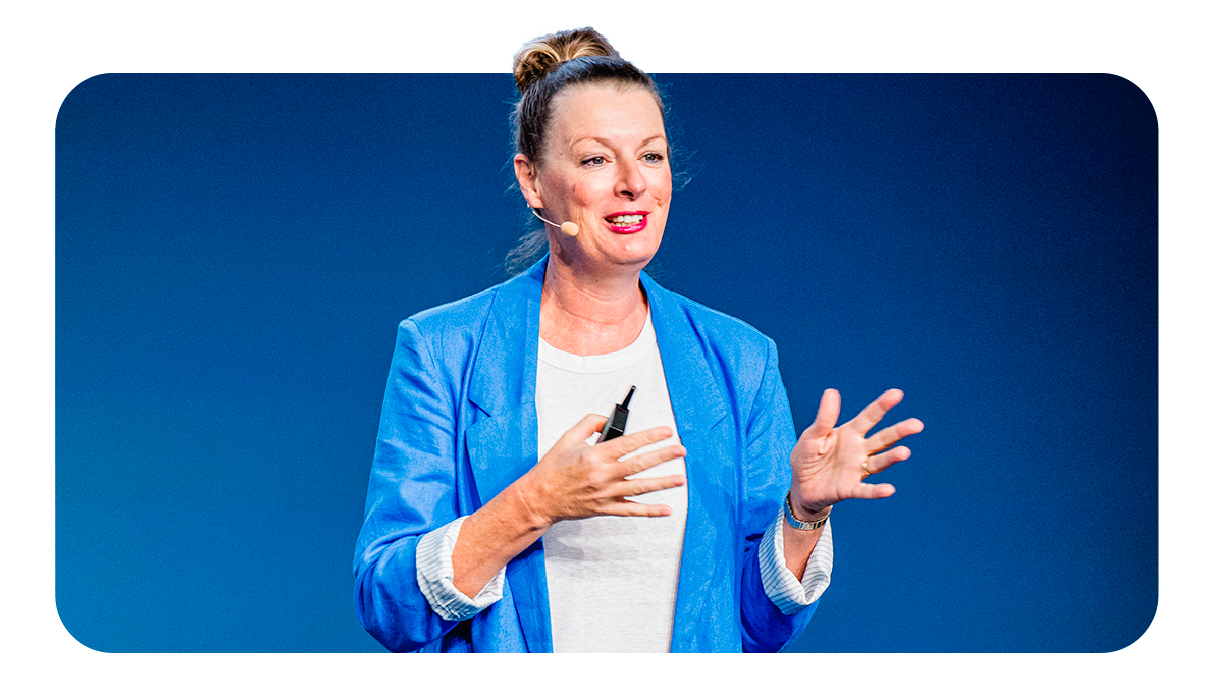Over the past year, consumers have shown they are making value-driven purchasing decisions and are holding brands accountable for their actions. Canadian consumers continue to show sustained search interest in renewable energy, climate change and electric cars over the past 12 months, and are looking to companies to be more mindful of their impact on people and the planet.
While the pandemic has inspired many organizations to focus on values and ways to be more helpful, this isn’t a new trend. In the years prior to the pandemic, research showed that having an authentic purpose can drive sales,1 and in 2018, purposeful companies financially outperformed the market by 42%.2
Marketers continue to have an opportunity to connect with customers aligned with their purpose, communicate their brand values and actions, and kickstart internal conversations to help find ways to scale back and work more sustainably. To that end, we asked leaders and sustainability advocates from Google, AVA Technologies, MyHEAT and Shopify to share ways marketers can champion sustainability, and implement it into their work now.
Align your packaging and practices with sustainability commitments
Valerie Song is CEO and co-founder of AVA Technologies, a current participant in the Google for Startups Accelerator Canada program. The company equips people with tech-powered products to grow indoor gardens in all conditions. With plants at the core of their product offering, AVA Technologies is focused on eco-friendly and sustainable solutions.
“Start by asking questions. What does it mean for the earth when a customer buys your product? Do you support a clear goal or commitment, like a UN Sustainable Development Goal? If so, why do you support it? Are there sustainability metrics you track? What sustainability 'swaps'' have you implemented for your business? Then, look at your marketing content,” she says. “We try to incorporate sustainability into our products and our production wherever we can. For example, our packaging is zero waste, our pod packs are 100% backyard compostable, and we work with nonprofits to plant trees for every pod pack sold. “

Reduce where possible, and encourage partners to do the same
Jill Puente leads the sustainability efforts at Google. She says that while recycling and sourcing sustainable materials is important, emphasis should also be placed on reducing where possible first.
“The best way to lower your footprint is to reduce what you're using. Do you really need to create another t-shirt or a swag giveaway? Is a printout truly necessary? Encourage your partners to keep sustainable work practices top of mind as well, and cut down on unnecessary travel, and source locally whenever possible.” she said. “Sustainability is a multifaceted issue requiring engagement and collaboration from partners. Amplify your efforts by ensuring your partners prioritize sustainability, and work with them to experiment with existing programming and find ways to incorporate sustainable practices into your strategies.”

Earn customer trust through transparent communications
Katie Boothby-Kung is the social impact manager at Shopify, who helps manage the company’s social impact initiatives and supports Shopify merchants like small businesses, startups and entrepreneurs. She says more than ever, people want to see sustainability efforts in action, and clear communication is key to gaining trust.
“As consumers become increasingly savvy and socially conscious, brands are pivoting towards sustainability in their products and operations. Unfortunately, the increase in consumer demand means ‘greenwashing’ is becoming more prevalent. Intentional or not, it's always best for consumers to do their homework and dig a little deeper. For brands to help educate their consumers and stand out amidst increasing noise in this space, transparency is the antidote," she said.
“Sharing as many details as possible about your sustainability practices is something consumers are looking for. Vague statements like ‘we source sustainably’ are no longer good enough to capture loyal and invested customers. And yet understanding and measuring your sustainability impact can be challenging. Look for solutions, get creative. One of Shopify’s merchants, Onda Origins, is a company that brings both ends of the coffee supply chain together by creating a social and financial connection between coffee growers and drinkers. They do this by sharing the stories of every coffee farmer they purchase from right on their product pages. It’s inspiring, and this depth of transparency fosters trust with their customers.”

Inspire internal stakeholders to prioritize sustainability
James Henry is the director of growth and sustainability at MyHEAT, an energy efficiency and renewable energy software solutions company with a mission to empower global urban GHG emissions reduction, improve energy literacy and address energy poverty. He says marketers are in a unique position to drive and influence change within their organizations.
“Any effort to pivot to communicate more sustainable business practices should be grounded in genuine commitment, and should go beyond surface-level statements. Put yourself in your customer's shoes and peel back the layers, look a little deeper; is there a robust and meaningful commitment to improving manufacturing or development processes? A significant step change in the business model, to packaging, delivery? Marketers can use their skills to influence internally, to drive change from within the company, a critical step which will only serve to bolster any external messaging in the future,” he said.

Putting sustainable, eco-friendly strategies at the core of your business is not a quick fix or overnight strategy. It can require time, partnerships and creative problem-solving. But by doing so, you can show customers the actions your company takes to do its part, and connect with value-driven customers to win their loyalty over the long-term.







